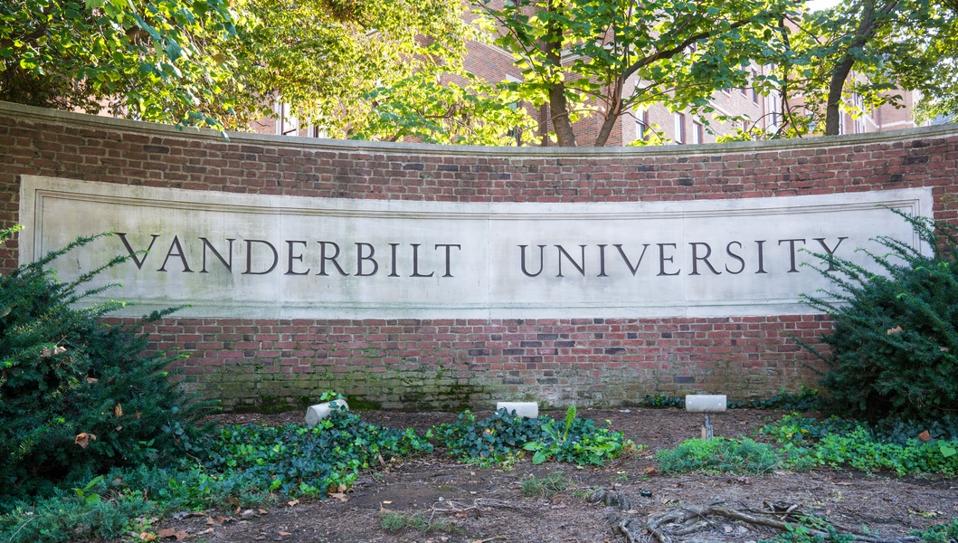Every admissions season, underclassmen look to top-ranked seniors’ college results as a gauge for competitiveness in the college admissions landscape. Learning that students with a 4.0 GPA, perfect test scores, and an array of impressive extracurriculars were rejected from the Ivy League often serves as a wake-up call for many younger students.
But this year, many top-performing students faced startling rejections from schools outside of the Ivy League. Parents and students were shocked to learn that their high school’s valedictorian made the cut at, say, Brown, but didn’t get into, say, Vanderbilt.
Given that Vanderbilt’s Regular Decision admissions rate was 3.3% and the school saw the largest applicant pool in its history, it’s no wonder that top students are facing rejection. However, for most high-achieving students, this outcome likely has more to do with their strategy than with their resume. Here are the three primary reasons that top students get rejected from Vanderbilt and the other New Ivies—and how you can avoid making the same mistakes in your application:
1. They Underestimated The Competition
In the past, schools like Vanderbilt, Rice, Emory, and Northwestern were regarded as relative safety schools for students aiming for Ivy League acceptances—but that has changed. In 2013, almost one-fourth of students who applied to Notre Dame were admitted. Today, that acceptance rate has plunged to just 9%. Northwestern’s admissions rate dropped to just over 7%. Rice saw a 7.8% admissions rate. Students also clamored to get into NYU this application cycle, with the applicant pool topping 120,000 people.
All of this signifies that these schools have established their standing among the most competitive in the nation, both in terms of their desirability and selectivity. Students no longer treat these schools like a second choice to their Ivy League ambitions—they are high reach schools in their own right. That being said, as with the Ivy League schools, the steep competition at schools like Vanderbilt and Northwestern is largely due to sharp increases in applicant pools. Though it is not necessarily harder to earn admission in terms of academic credentials, students must be strategic and intentional to distinguish themselves from thousands of other highly qualified applicants.
2. They Didn’t Demonstrate Interest
Every college wants to be wanted. One of the best ways for students to catch admissions officers’ eyes is by clearly demonstrating their interest in a school. If a student sees a school like Duke or Emory as a backup plan to Harvard, that will come across in their application. Instead, students should be intentional about demonstrating their authentic interest in the school, as it is a component that admissions officers weigh in their holistic evaluation.
Rice, Duke, and Northwestern, for example, make this explicit on their Common Data Sets, listing “level of applicant’s interest” as an admissions consideration. This means that these schools pay attention to applicants’ level of engagement, communication with admissions representatives in their region, attendance of online workshops or other events, and campus visits, both virtual and in-person.
However, even at schools that do not factor these explicit modes of engagement into their admissions processes, showing genuine and specific interest in the institution will benefit students in the application process. Applying Early Decision is one of the clearest and most effective ways to demonstrate interest, but students can also do so through their supplemental essays. For instance, a student interested in business and history might cite specific interdisciplinary programs like the Kellogg Certificate in Managerial Analytics or the Northwestern Undergraduate Research Grants to show their understanding of how Northwestern will help them achieve their goals. Likewise, a student applying to Rice might mention the residential college system, the Baker Institute for Public Policy, or the unique relationship between Rice students and Houston’s active political scene to show their rich understanding of social and civic life on campus.
3. They Didn’t Consider Their Fit
Finally, in a sea of highly qualified and intellectually gifted applicants, top schools are specifically looking for students who will align with their campus culture, academic programs, and core values. Vanderbilt, for example, is a research-intensive, pre-professional university with a strong social scene and an interdisciplinary core curriculum. A student whose application is entirely focused on East Coast, liberal arts-style learning with no indication of interest in pre-professional life or large research institutions will likely be perceived as a poor fit. Duke prides itself on its interdisciplinary ethos and the balance it strikes between rigorous academics and campus life through its passionate sports fandom and active arts scene. Students who demonstrate that they thrive in environments that are both academically intense and socially vibrant will likely stand out over those who focus solely on the academic caliber of Duke’s programs. Ultimately, a standout application will not only demonstrate that a student is exceptional, but that they are exceptionally suited for that school.
While seeing top students face rejection can be intimidating, parents and students should view it as a catalyst for a more intentional and tailored approach to the college admissions process. Rather than feeling defeated, younger students should start early to develop their admissions profile strategically, build their college list, tailor their extracurriculars, and present themselves not just as exceptional students—but future members of a specific campus community.

